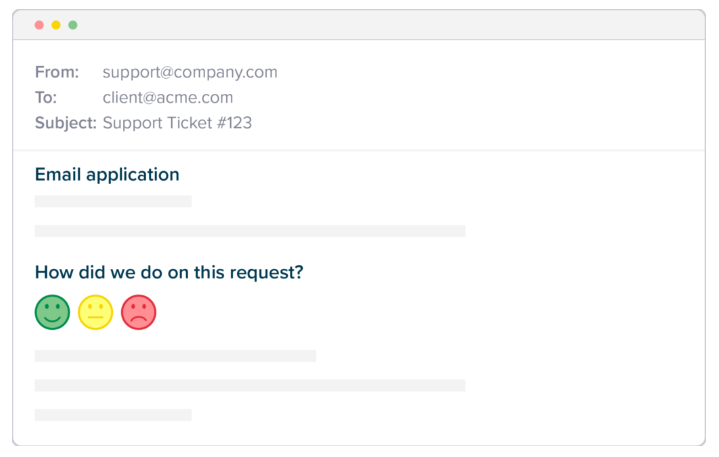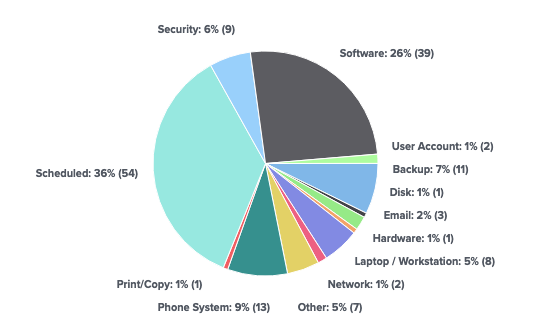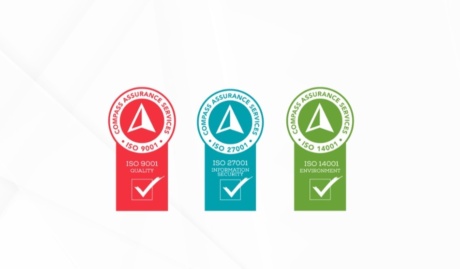When it comes to measuring the effectiveness of IT support, many senior business leaders find themselves drowning in a sea of data, with no clear understanding of which metrics really matter. In this blog post, we’ll be taking a closer look at three key metrics that every business leader should be paying attention to when it comes to measuring IT support performance and optimising the effectiveness of IT within their organisation.
Customer Satisfaction
Customer satisfaction (CSAT) is a direct measure of how satisfied your end users are with their experience of your IT support services. CSAT feedback is usually captured through a simple online survey directly from the end user on completion of each interaction, with results presented as a percentage score. If you’ve ever clicked on a red or green smiley face icon in a support email, then you’re familiar with a CSAT survey.
The end user experience (and therefore CSAT) can be impacted by many factors, such as how easy it was to engage with IT support, how quickly and effectively the issue was resolved, and how friendly and supportive the IT support person was in their communication. Many of these metrics can be tracked individually, but arguably are most useful when considered in combination through the resulting metric of CSAT.

Why is CSAT important?
Customer satisfaction is a metric that speaks to the quality of the IT support service being delivered. Whether you have an in-house IT support team, work with an external IT support partner, or some combination of the two, ensuring that the service being delivered is of the highest quality should be a core KPI of business leadership.
Issue Categories
All IT support issues should be logged as tickets, and all tickets should be categorised in a number of different ways. A common approach to categorising support tickets is to use the industry standard ITIL guidelines, meaning a ticket may be categorised using one or more of the following:
- Priority – Often a numerical scale from 1 to 4, where 1 is urgent.
- Type – Often using categories such as “Incident”, “Request” and “Problem”.
- Sub-type – Next layer categories such as “Hardware”, “Software” and “Accounts”.
Irrespective of what labels and values are used to categorise IT support issues, all issues must be categorised consistently to not only guide response efforts, but to allow for later reporting and analysis.

Why are Issue Categories important?
Issue categories provide an extremely important feedback loop to management on what is working well within the organisation and what needs attention. For example, an analysis of all urgent “Priority 1” issues may identify a particular piece of networking equipment that is repeatedly failing and causing significant disruption to business operations. By identifying this, management can choose to replace the faulty equipment, thus saving the business from further expensive downtime.
Another example may involve the discovery that there is a particularly high number of “Incident” style issues related to a particular software application. Further investigation may identify a misconfiguration within the software, or perhaps a lack of knowledge amongst staff of how to use the software, leading to errors. In either case an opportunity has been identified to remove a problem and improve productivity.
Stale Issues
Stale issues are issues that are not resolved within a reasonable timeframe. What constitutes a “reasonable” timeframe will differ from one organisation to the next, however a good starting point may be to use the average resolution time across all similar issues. The specific timeframe used is less important than the intent of the exercise, which is to draw attention to issues that, for whatever reason, are not progressing to resolution as would normally be expected.
Common causes of stale issues can include:
- Insufficient IT support capacity or knowledge to resolve issues in a timely manner.
- An end-user not engaging with IT support attempts to resolve their issue.
- An external vendor not responding to IT support escalations in a timely manner.
- A resolution requiring significant change or investment from the business.
Why are Stale Issues important?
Stale issues indicate a bottleneck, or even a complete blockage in the normal IT support process. The bottleneck may be temporary, or it may be more systemic, but in either case the usual processes are not functioning as normal, and an opportunity may exist for management to step in to either help clear a temporary blockage, or to explore opportunities to remove systemic issues.
Conclusion
Monitoring key IT support metrics is vital to maintaining service quality and driving the effectiveness of IT within the organisation. The challenge can be separating the signal from the noise, identifying those metrics that actually matter, and not becoming distracted or overwhelmed by everything else. By focussing on these three IT support metrics, you will have a clear line of sight on service quality and opportunities for business improvement.


























